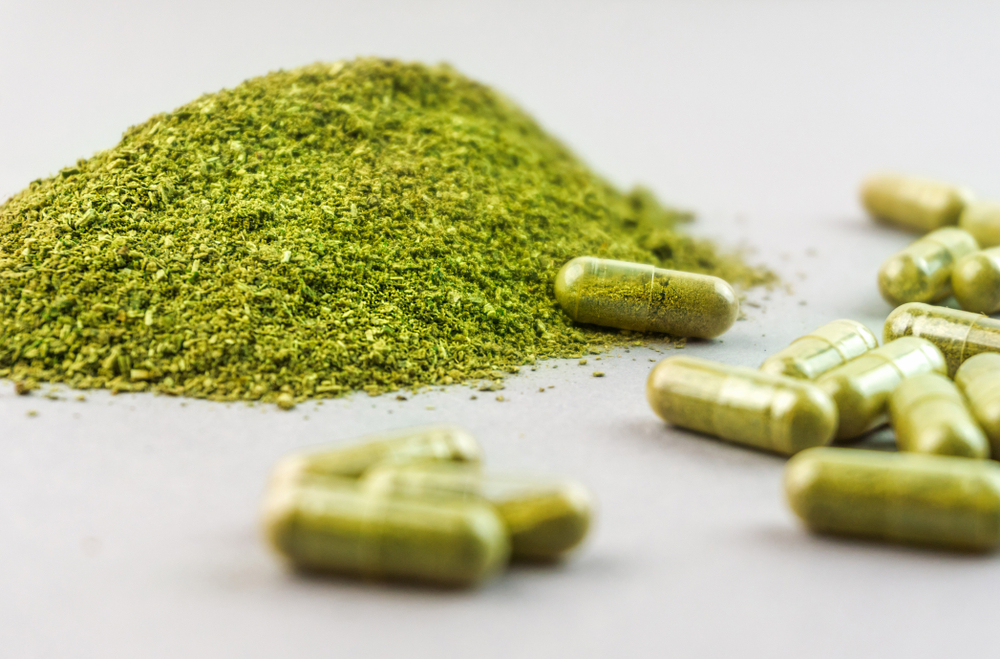Kratom Injuries
About Kratom Injuries
- Kratom is a tropical tree found in Southeast Asia. The leaves of the plant contain psychoactive ingredients and can produce a stimulant effect in low doses.
- The plant is often consumed orally through tablets, capsules, and gummy bears. It is also ingested through kratom tea, which is made by brewing kratom leaves. Kratom leaves can also be chewed.
- Kratom has been linked to overdoses, which have been fatal in some cases. Still, it is legal in most U.S. states and readily available in gas stations, smoke shops, and dispensaries.
- People who have experienced the adverse health effects of kratom and who have lost loved ones are filing lawsuits against kratom manufacturers and sellers for claiming that the products were safe.
Kratom FAQs
How does kratom work?
Kratom contains multiple compounds that can affect the body. The most well-known are mitragynine and 7-hydroxymitragynine, which are alkaloids. These compounds bind to different receptors in the brain and can interact with dopamine and serotonin levels. Within minutes of consuming kratom, someone might feel more alert and energetic. They may feel their mood improves and feel more sociable overall. In higher doses, kratom can have a sedating effect. The effects of kratom are often compared to opioids, and it’s been touted as a healthier alternative for people experiencing opioid and alcohol withdrawal symptoms. Kratom has also been advertised to help people who suffer from anxiety and panic attacks. People also use it to make soaps and for aromatherapy purposes.
Does kratom have withdrawal symptoms?
Kratom may seem like an appealing option for someone who is experiencing opioid withdrawal, but it has withdrawal symptoms of its own. One study published in Drug and Alcohol Dependence found that more than half of kratom users who’d used the compound for more than six months showed severe dependency. Physical withdrawal symptoms included muscle spasms and pain, difficulty sleeping, watery nose and eyes, hot flashes, increased appetite, and diarrhea. The kratom users surveyed in the study reported multiple psychological symptoms, including restlessness, nervousness, tension, anger, and sadness. Researchers have also found that the newborn babies of pregnant women who are regular kratom users are more likely to show withdrawal symptoms like vomiting, restlessness, and irritability after birth.
Is kratom regulated?
Kratom isn’t regulated by the U.S. Food and Drug Administration (FDA), and the agency has warned against using kratom products. This means that kratom products don’t undergo any of the rigorous testing or screening procedures that are required for medications and drugs that the FDA approves. As a result, kratom products may have contaminants that are dangerous to human health. According to the FDA, kratom products have been found to contain heavy metals, like lead and nickel, and salmonella. While kratom companies tout their products as safe, there’s no way for consumers to guarantee that they’re being honest.
What are the side effects of kratom?
Because the government doesn’t regulate kratom, it isn’t easy to know which ingredients are in the products you see on store shelves — or how much kratom a product actually contains. Kratom can cause a range of adverse side effects, including nausea, constipation, anxiety, hallucinations, drowsiness, dizziness, confusion, tremors, high blood pressure, and seizures. Cases of kratom-related substance use disorder have also been diagnosed in patients who developed a dependency on the compound. Additionally, kratom has been linked to several fatalities, and the risk of fatal overdose increases when it’s taken with other drugs.

Table of Contents
What Is Kratom?
Mitragyna speciosa, the scientific name for the kratom tree, has been used by farmers in Asia dating back to the nineteenth century. It’s traditionally chewed, smoked, and consumed through tea, and it’s historically been utilized to boost energy for workers who need it. In Asian countries, including Thailand, Malaysia, and the Philippines, kratom is known by the names krathom, kakuam, ithang, thom, biak-biak, ketum, and mambog. Kratom grows in tropical climates with rich soil; its leaves are harvested and dried to produce the substance. From there, the leaves can be chewed or ground into powder and ingested in other ways.
Kratom has risen in popularity in the U.S. in the last two decades, with a notable increase in recent years. According to the FDA, about 1.7 million Americans ages 12 and older used kratom in 2021. One Reddit forum dedicated to kratom has more than 170,000 members. While kratom is legal in most of the U.S., the U.S. Drug Enforcement Administration (DEA) has named it a “drug and chemical of concern.” The FDA warns against using kratom for treating medical conditions because the agency hasn’t been able to study the full effects of the substance. It cannot be marketed as a nutritional supplement or food additive because it lacks FDA approval, but that doesn’t stop manufacturers from making claims about its effectiveness. While kratom is typically imported from Asia to the U.S., the FDA issued an import alert last July authorizing the agency to seize imported kratom products.
Purported Benefits of Kratom
Opioid use disorder affects millions of Americans and led to nearly 82,000 deaths in 2022. Sufferers and their loved ones are often desperate for a solution to opioid withdrawal, and kratom may seem like the perfect alternative. It’s legal in many states and usually advertised as natural and non-addictive. Kratom produces similar effects to opioids, and some people with opioid use disorder choose to take it while going through opioid withdrawal. One study found that the risk of overdosing on opioids is more than 1,000 times higher than the risk of overdosing on kratom. For this reason, it’s an attractive choice for many because it’s less addictive than opioids like oxycodone and heroin.
Additionally, kratom is associated with pain relief because it activates opioid receptors, so people who struggle with chronic pain and inflammation turn to the compound for help. It can even act as an appetite suppressant and is utilized for weight loss by some users. Kratom is also used by people suffering from mental health conditions. Higher doses of kratom are known to reduce anxiety, which can mimic the effects of anti-anxiety medication. A study of mice found that kratom can lower corticosterone levels, which is linked to a lower risk of depression. However, research has found that the substance can worsen manic and psychotic symptoms in people with existing mental health conditions.
Is Kratom Dangerous?
Kratom manufacturers and sellers emphasize the potential benefits of the compound, often saying that it’s all-natural and, as a result, safe. However, the possible effects of kratom aren’t well-studied enough for researchers to say that the substance is safe for human consumption definitively. The FDA states that there’s “inadequate information to provide reasonable assurance” that kratom doesn’t present “a significant or unreasonable risk of illness or injury.” Additionally, some kratom products have been found to contain salmonella and heavy metals at levels that are dangerous for humans. Because no one regulates the growing, harvesting, and production processes, it’s impossible to know whether the kratom a consumer buys has been adulterated.
Is Kratom Addictive?
Withdrawing from highly addictive opioid drugs is unpleasant at best and life-threatening at worst, so it’s no surprise that kratom is sought-after among people who struggle with substance use disorder. While kratom is widely considered to be less addictive than opioids and may help with withdrawal symptoms, studies have shown that it has its potential for dependency. People who take kratom regularly are at the highest risk of developing a dependency on the substance and may need medical treatment to handle withdrawal symptoms properly. Kratom users may falsely believe that they won’t become addicted to the drug because it’s widely advertised as all-natural, but that isn’t always the case.
The Legality of Kratom
Is kratom legal? The answer largely depends on where you’re located. Kratom is banned in Alabama, Arkansas, Indiana, Rhode Island, and Wisconsin. It is forbidden worldwide in several countries, including Australia, Myanmar, and Finland. In states like Florida, kratom is only available to consumers who are 21 or older. But in much of the country, kratom is freely available without age restrictions. In many states, kratom isn’t regulated or restricted at all — anyone can walk into a gas station or smoke shop and purchase it without limitations. The DEA announced plans to label kratom a Schedule I controlled substance, like heroin or cannabis, but the plan faced overwhelming backlash from lawmakers and members of the public. The agency didn’t move forward with its proposal.
What happens if you’re caught using kratom in a state where it’s banned? The consequences vary by state. In Alabama, you’d face charges for unlawfully possessing a controlled substance, which is a Class D felony. That carries a penalty of up to five years in prison and $7,500 in fines. In Arkansas, it’s considered a Schedule I Controlled Substance and carries a potential penalty of up to 20 years in prison and $15,000 in fines. One Arkansas man was sentenced to 10 years in prison for trafficking kratom in 2022. Because the laws vary drastically by state, it’s crucial for anyone using kratom to familiarize themselves with local regulations.
There has been bipartisan legislation in recent years to try to keep kratom accessible to consumers. The Federal Kratom Consumer Protection Act, introduced in 2023, would limit the FDA’s ability to regulate kratom by forcing the agency to treat it the same way it would a dietary supplement instead of a drug. The bill would’ve also restricted the ability of the Department of Health and Human Services to enforce import restrictions on kratom products. The legislation didn’t progress in the U.S. Senate. Still, the initial support it received from lawmakers on both sides suggests some support for loosening the substance’s regulations.
Injuries & Deaths Associated With Kratom
As kratom increases in popularity, the number of injuries and deaths associated with kratom continues to rise. Along with the adverse short-term side effects that kratom can cause, there are long-term, potentially irreversible problems that experts have associated with the substance. Kratom use has been linked to seizures, chronic insomnia, and cognitive impairments. Researchers have also found that people who take kratom may be at a higher risk for drug-induced liver injury. One study of mice found that kratom can affect the body weight, organs, and blood. From 2011 to 2017, more than 1,800 kratom exposures were reported to poison control centers in the U.S., and more than half of those reports resulted in a “serious medical outcome.”
Is kratom fatal? While some deaths have been linked to kratom without any other substances involved, it’s more likely to kill when combined with other drugs. An analysis from the U.S. Centers for Disease Control and Prevention (CDC) found that 80% of kratom-involved deaths occurred in people who had a history of substance abuse. People who overdosed on kratom frequently had other drugs in their system, including fentanyl, heroin, benzodiazepines, and prescription drugs. While these drugs can kill on their own, research has found that kratom can increase the risk of overdose. Due to its lack of regulation and the fact that the opioid crisis continues to worsen, fatal kratom-related overdoses will likely rise in the coming years.
Filing a Kratom Lawsuit
Dozens of wrongful death lawsuits have been filed against the manufacturers, sellers, and retailers of kratom products by people who lost loved ones to kratom-related overdoses. The lawsuits center on the claims that manufacturers and retailers make about kratom — namely, that the substance is safe and effective without warning consumers about the potential risks. Kratom products are often more potent than what’s found naturally in kratom leaves, and they aren’t always labeled appropriately. According to risk management company Verisk, kratom lawsuits have resulted in at least $18 million in jury verdicts, and there are likely more to come.
If you’ve faced a kratom-related injury or have lost a loved one to kratom, you may be reeling from your experience, unsure how a product you thought was all-natural and safe to consume could cause so much damage. While nothing can undo the damage you’ve experienced, you likely have legal options available to you. You could be eligible for compensation for medical expenses, lost wages, funeral and burial costs, pain and suffering, and more. If you think you may have a case, it’s important to contact an attorney who has experience with kratom lawsuits to determine the best course of action. They can help you determine who can be held liable for manufacturing and marketing a kratom product and represent you in court if settlement talks are unsuccessful.












